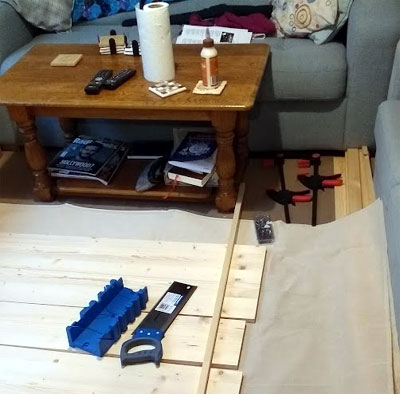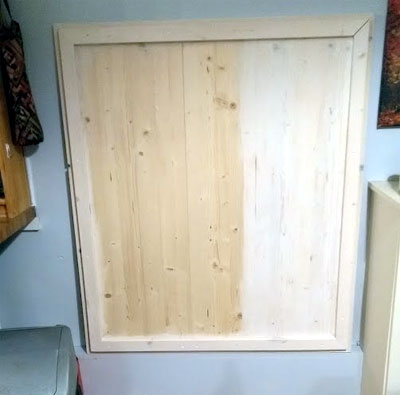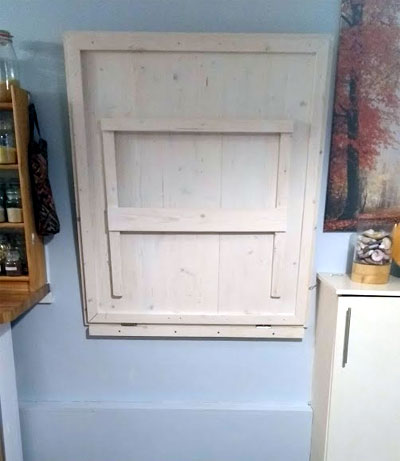Manufacturing Space
In my New Year’s Day post, I advised you to “watch this space.” As a reminder, this was the space I advised you to watch:

As you can see, it is space that is filled. But my wife came up with an ingenious plan that would allow us to manufacture space where none existed: by downsizing a bit (just a bit) we could turn that space (read: I could build something) into an as-needed craft area. Granted, this involved getting rid of a fair number of books, but we felt we were up to the challenge.
And a challenge it was. Getting rid of books can feel like saying good-bye to old friends (you readers will understand). Even if you are never going to read them again, just having them brings a warm feeling, and deciding which ones were to go and which ones were to stay felt like giving away a litter of puppies you want to keep but know you don’t have the room for.
It also involved getting rid of a sturdy, solid oak bookcase. That was hard: it was one of the first pieces of furniture we bought, but the plan wouldn’t work unless we let it go and sometimes ya jus’ gotta put a bullet in Old Yeller’s head. So, we emptied it and carried it into the hallway (no easy feat, as it is heavy as sin) and put a sign on it saying, FREE, and in a few days it had found a new home.
The loss of the bookcase not only freed up some space, but it removed a fair bit of clutter because, as we all know, the fifth law of physics states that clutter increases in direct proportion to the flat space available. Remove the flat space and the clutter takes care of itself.
That left us with a shedload of redundant books, and the need for something clever to fill the newly created void with, which necessitated a trip to the local Home Depot (or Homebase, as they insist on calling it here). After finding everything I needed, I loaded up the cart, brought it to the checkout and nearly choked when the lady told me the total. I had forgotten that the price of lumber has skyrocketed over the past year, making what should have cost a reasonable amount into a number that competed with my monthly rent payment. But, when you need wood, you need wood, so I paid up, returned home and dumped a pile of lumber on the living room floor, which became my temporary workshop.

Six days, and an unimaginable number of swear words later, we had a fold-away table that I am very pleased with. The notion was simply theoretical when I started, so I was relieved when it finally came to fruition and it actually worked.
The new craft area brings with it a number of improvements. First, it clears that area and keeps it clear because if it isn’t clear, you can’t lower the table and that would mean all the time, effort and money would have been wasted, and we’re not having that. Also, the table is a brighter colour and doesn’t suck the light out of that area like the dark oak bookcase did. And, if I have to say so myself, I think it looks really nice.


As a bonus, when it is down, and my wife is sitting in the chair crafting away, there is still room enough for me to get to the balcony for a pipe, or nip into the kitchen for a cup of tea.
And when it’s folded up, there’s enough room to do a foxtrot, if the mood strikes.
